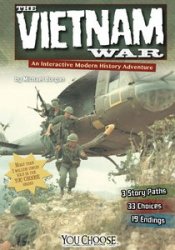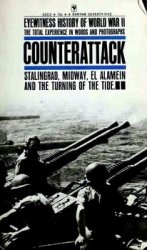Mangas Coloradas is killed in custody.
Nearing 70 and still suffering from wounds he received during the Apache Pass conflict (see entry for JULY 15, 1862), a weakened Mangas Colora-das agrees to meet American soldiers at a peace conference. The meeting, scheduled for January 17, proves to be merely a ruse to capture the elderly Apache military leader. According to an eyewitness, for the next two days Mangas Colo-radas is tortured with heated bayonets. When he resists, he is shot dead. The official army report holds that he was accidentally killed while trying to escape.
The Shoshone suffer the Bear River campaign.
Led by California businessman Patrick Edward Connor, the Utah state militia attacks a Shoshone camp along the Bear River in Idaho. The assault is in retaliation for raids on whites traveling along the Overland Mail Route. With 300 men, Connor sets upon the village at sunrise, closing off all escape routes. The Shoshone fight for their lives, but most are killed either in their encampment or while frantically trying to escape by swimming across the river. The militia estimates Indian casualties at 224 and takes 164 women and children captive. For his leadership during the bloody

The hanging of 38 Dakota Sioux convicted of participating in the Minnesota Uprising of 1862. The event was the largest public execution in the history of the United States. (Library of Congress, USZ62-37940)
Slaughter, the War Department gives Connor the title of brigadier general.
Apache and Navajo (Dineh). (See also entry for NOVEMBER 1865.)
Summer
Kit Carson’s troops battle the Mescalero Apache.
To stop the raids of Mescalero Apache, Brigadier General James H. Carleton assigns former Indian agent and trader Christopher “Kit” Carson to lead a campaign against them. Exhausted by Carson’s constant attacks, the Mescalero surrender and agree to resettle on Bosque Redondo, an area in what is now east-central New Mexico that Car-leton has reserved as a place to confine renegade
Union troops make a second expedition into Indian Territory.
With the aid of pro-Union Indians, federal troops invade Indian Territory from the north for a second time (see entry for SUMMER 1862). They drive off Confederate-allied Indians, who scatter to the south and west. The invading army pushes through the Cherokee and Creek Nations to the Canadian River before the soldiers are called back East following the Union’s decisive victory at Gettysburg.
Rebellion leader Little Crow is murdered.
Near Acton, Minnesota, a white farmer comes upon Little Crow, the Dakota leader of the Minnesota Uprising (see entry for AUGUST 18 TO SEPTEMBER 23, 1862), picking berries with his son. The farmer shoots the Indian dead and disposes of his body at a local slaughterhouse. Reflecting the hatred whites of the area feel for Little Crow, the Minnesota legislature votes to award $500 to his murderer.
June, he declares that any Navajo who has not surrendered by July 20 “will be considered as hostile, and treated accordingly.” He makes little attempt to let the Navajo people know of his order, however. Two days after his deadline, the army begins its military campaign against the tribe. By September, field troops under the command of Kit Carson are waging a full-scale operation. In addition to capturing “hos-tiles,” they set about destroying the Navajo’s fields, houses, and livestock herds. (See also FEBRUARY TO MARCH 1864.)
“Another shot was heard, and another and another. The firing gradually picked up, and soon it sounded like frying, with bullets hitting all over the cave. This went on nearly all afternoon. Then the firing ceased, but, by that time, nearly all of the Na-vajos were killed. Men, women, children, young men and girls were all killed on the cliffs. Some
Just slid off the cliffs____At the
Bottom were piles of dead Dine [Navajo]; only a few survived. Blood could be seen from the top of the cliffs all the way down to the bottom.”
—Navajo Eli Gorman, on the invasion of Canyon de Chelly by Kit Carson’s troops
The U. S. Army launches a military campaign against the Navajo (Dineh).
After subjugating the Mescalero Apache (see entry for SPRING 1863), Brigadier General James H. Carleton prepares to war against the Navajo (Dineh) tribe. In




 World History
World History









